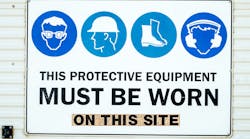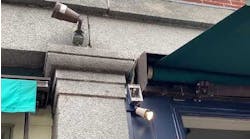At a Tennessee appliance plant, the plant engineer noticed he was raising his voice considerably to have a conversation with the maintenance manager while standing near a particular production line. Looking around, he saw no sign posted requiring hearing protection.
What do you think he did? What do you think the maintenance manager did in response to seeing that “look around”? What would you do? Without saying a word about it, both men began to roll up the foam earplugs they carried with them.
There wasn’t a hearing protection sign in that area because at the time the signs were posted, the area had a different configuration. It wasn’t nearly as loud, then. But things change.
If there is a sign telling you to wear hearing protection or eye protection, then you should wear that protection. If you believe the sign is outdated, make a suggestion to the safety director. If the conditions are such that there should be a sign but there isn’t one, you have a choice. You can choose to use lack of a sign as an excuse to put yourself in danger. Or you can choose to make your own PPE decisions based on your training, experience, and desire to be safe.
The first choice assumes there is truth to this position: “No sign tells me to wear it, so there’s no reason to do so.” That position is based on the false assumption that signage, not conditions, dictate how you should protect your precious hearing and eyesight.
It is the conditions that can cause you to lose these gifts. So it is the conditions that inform your choice.
This is a good principle to keep in mind generally. As you approach an area where a lift truck driver is moving pallets, do you really need someone to tell you to take a different path and avoid the area? If you see a spill but there’s no sign or barrier blocking you from walking across it, do you walk around it anyhow? Continually assessing the conditions around you and responding intelligently to the safety threats you discover is a good habit to develop.




